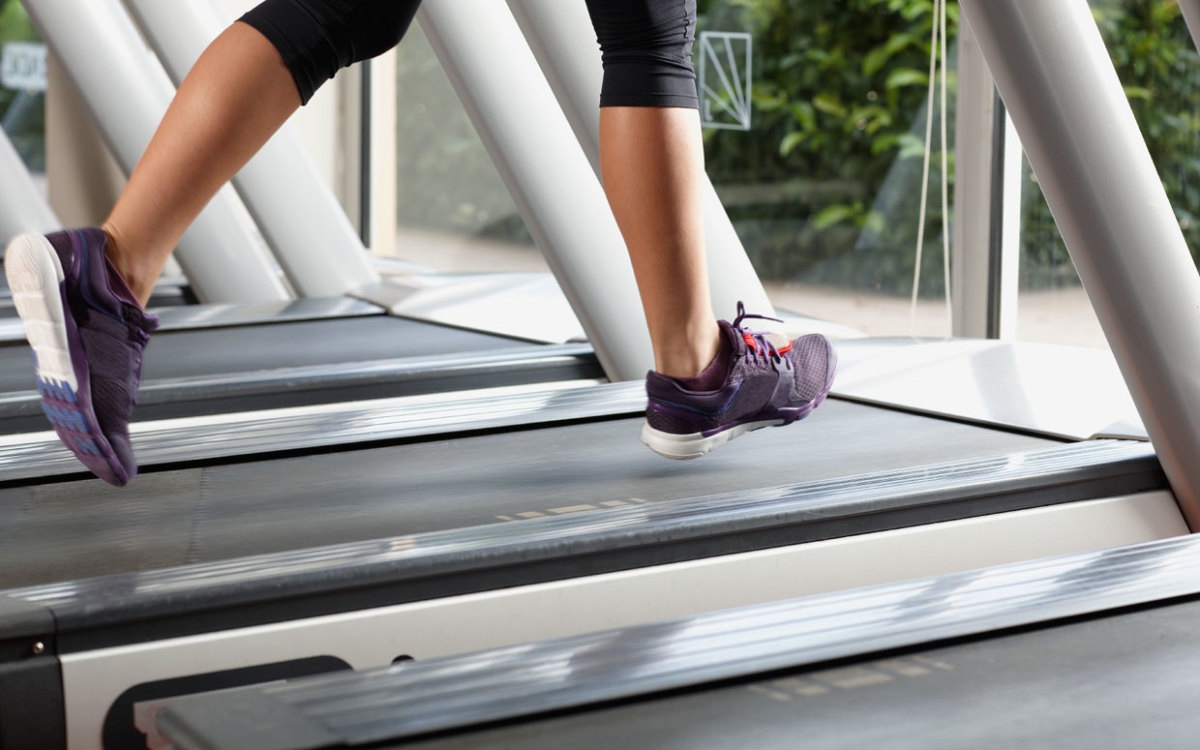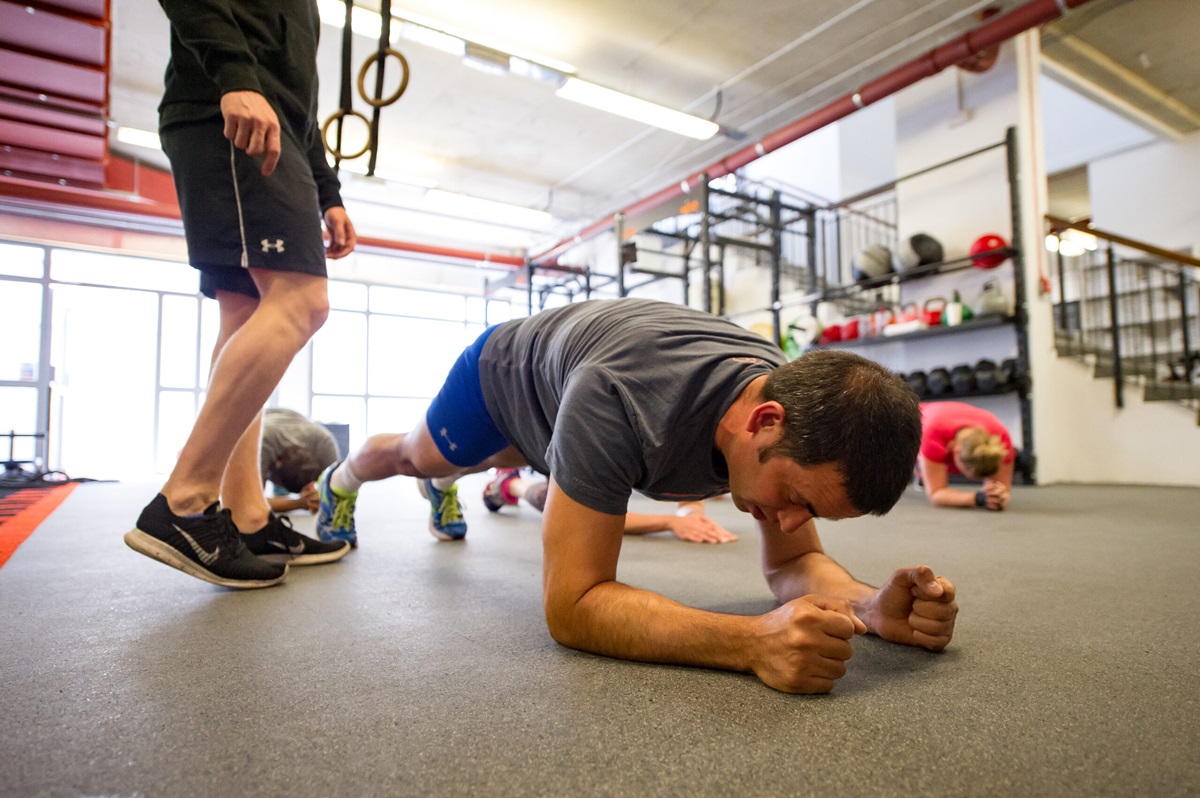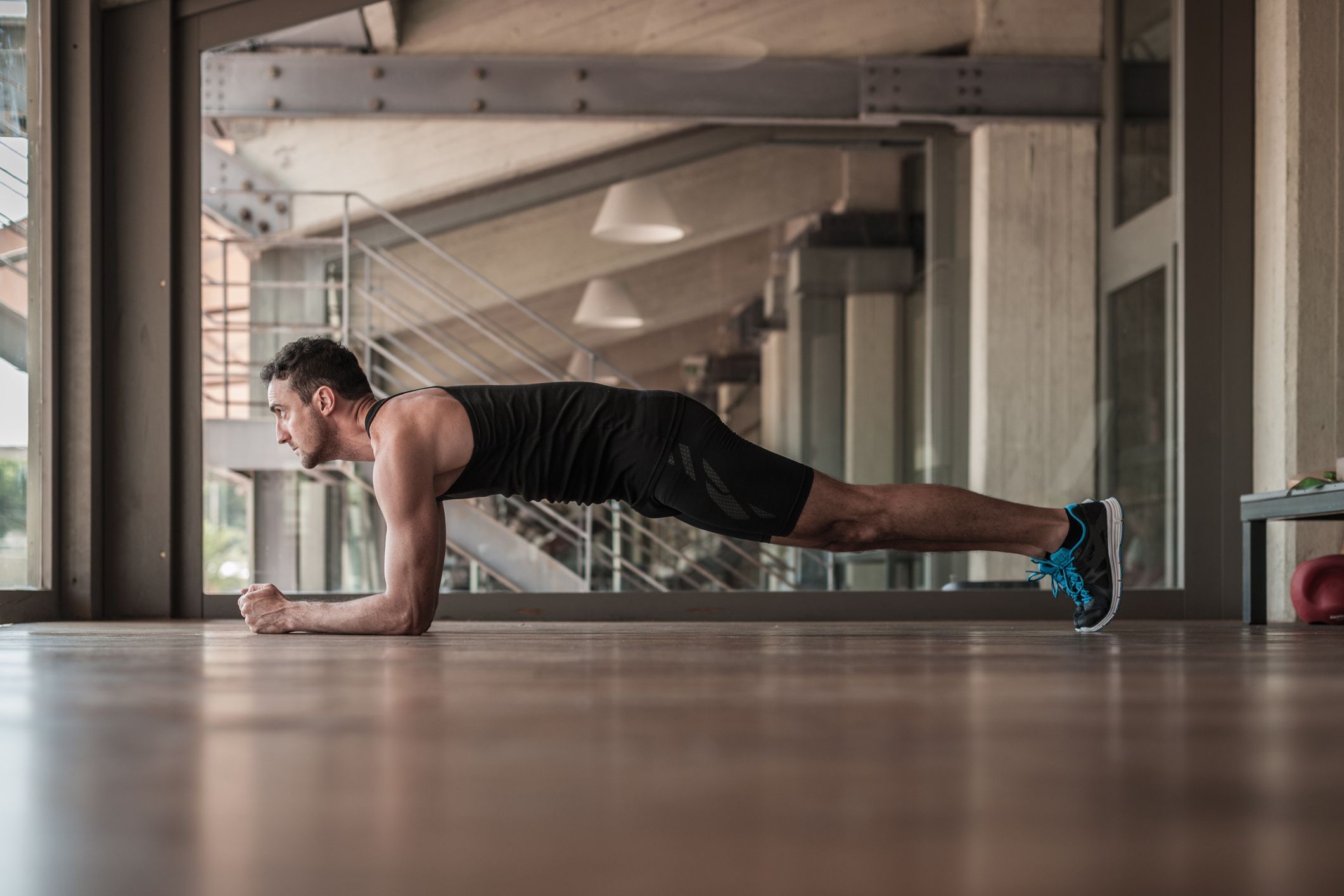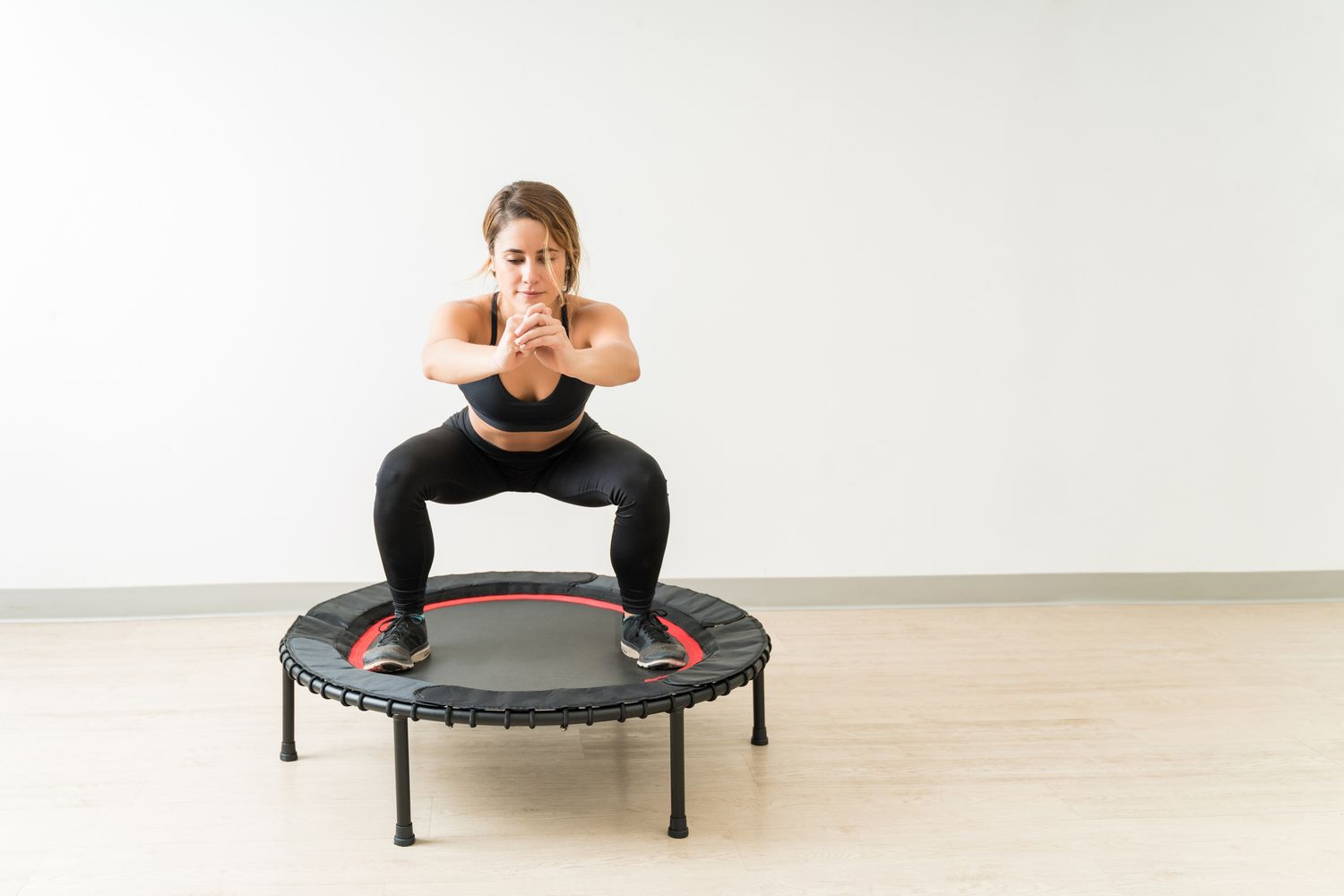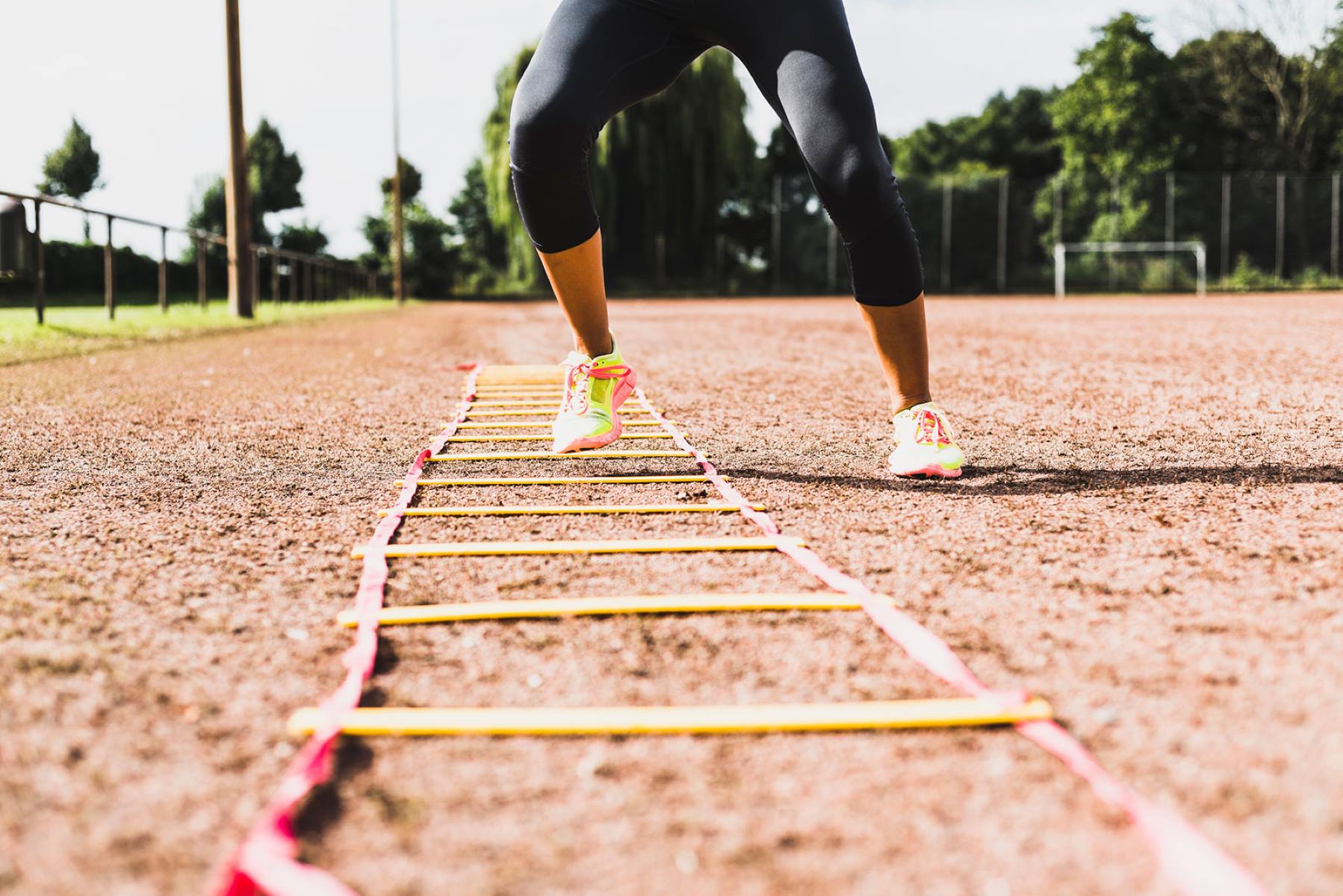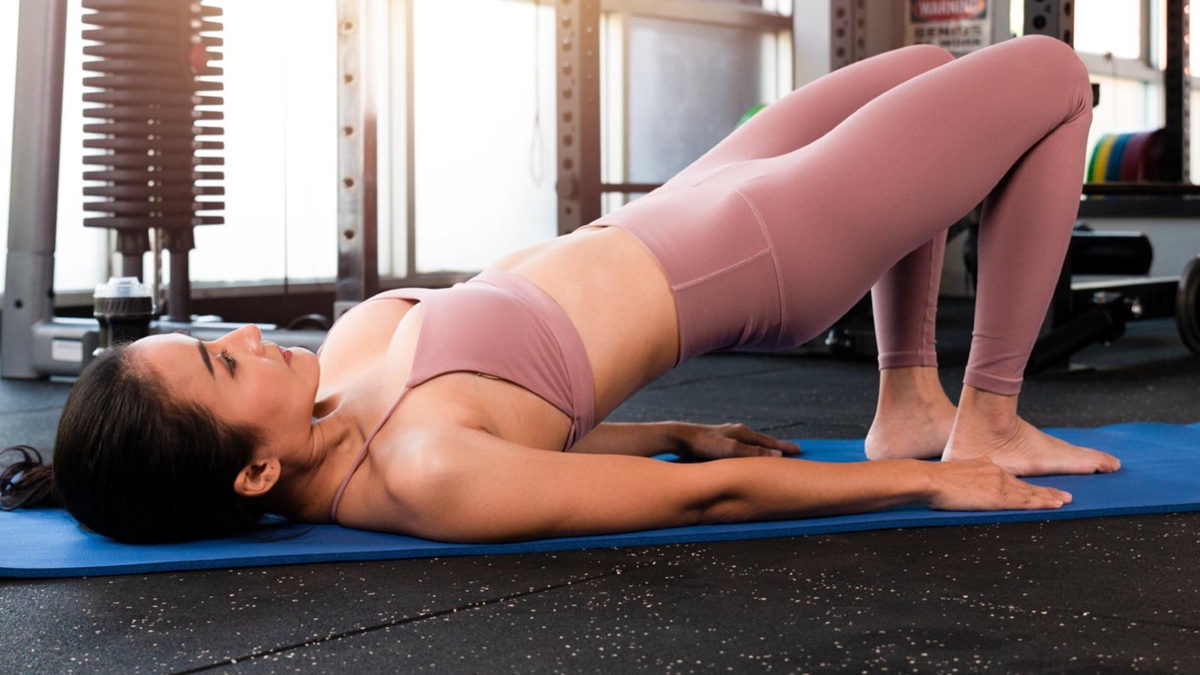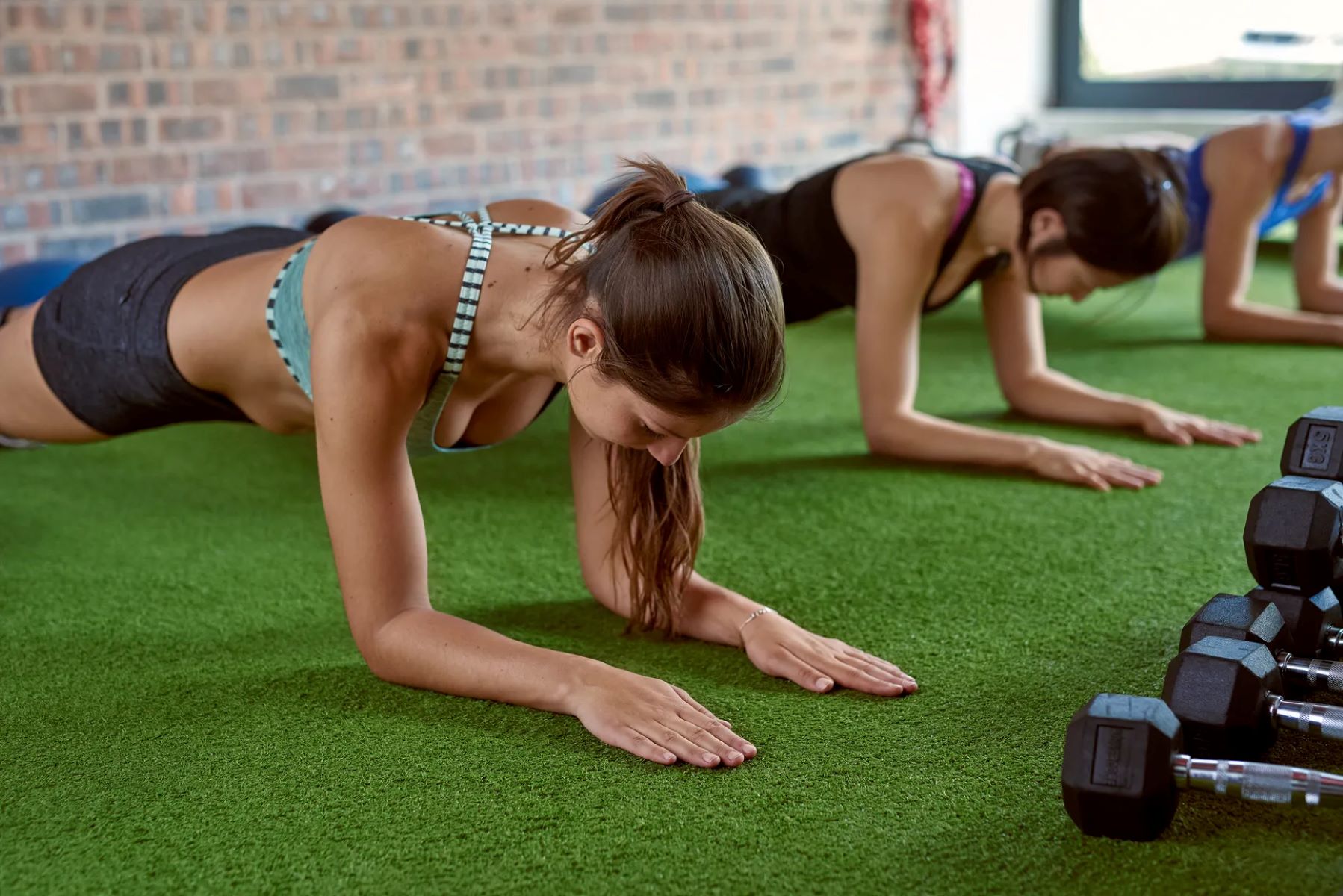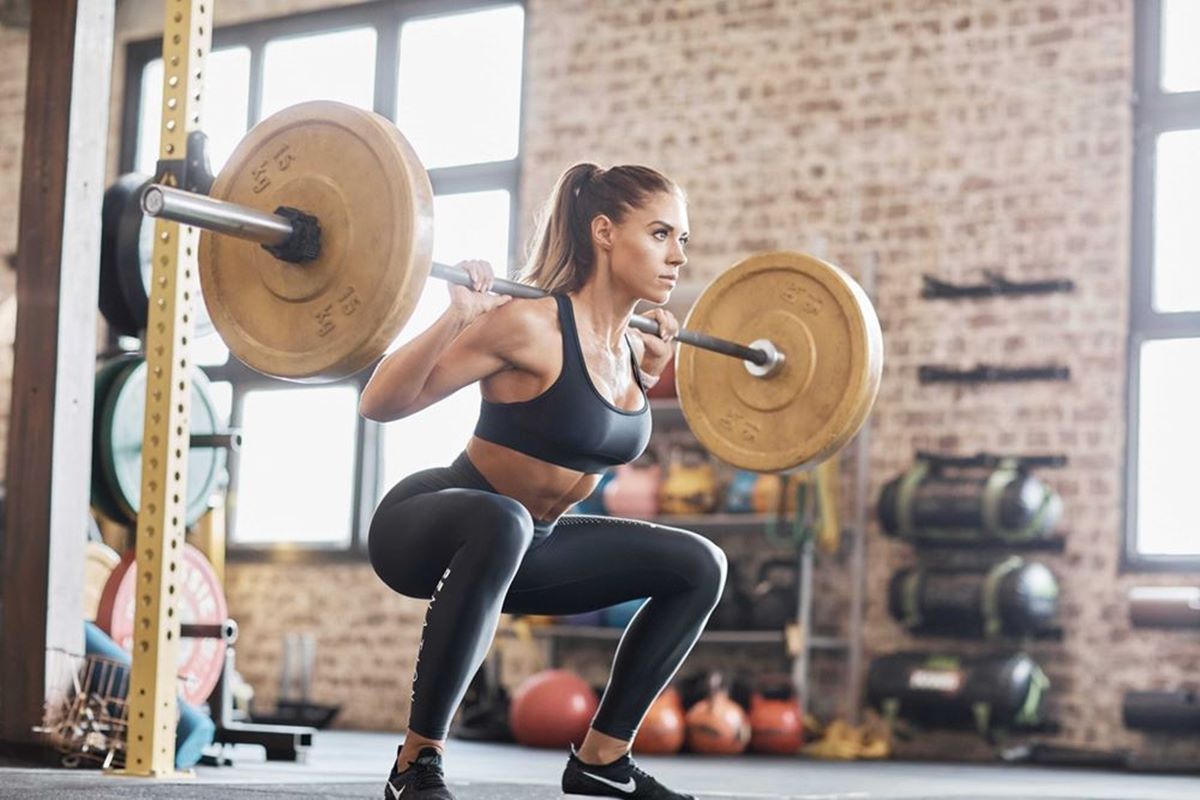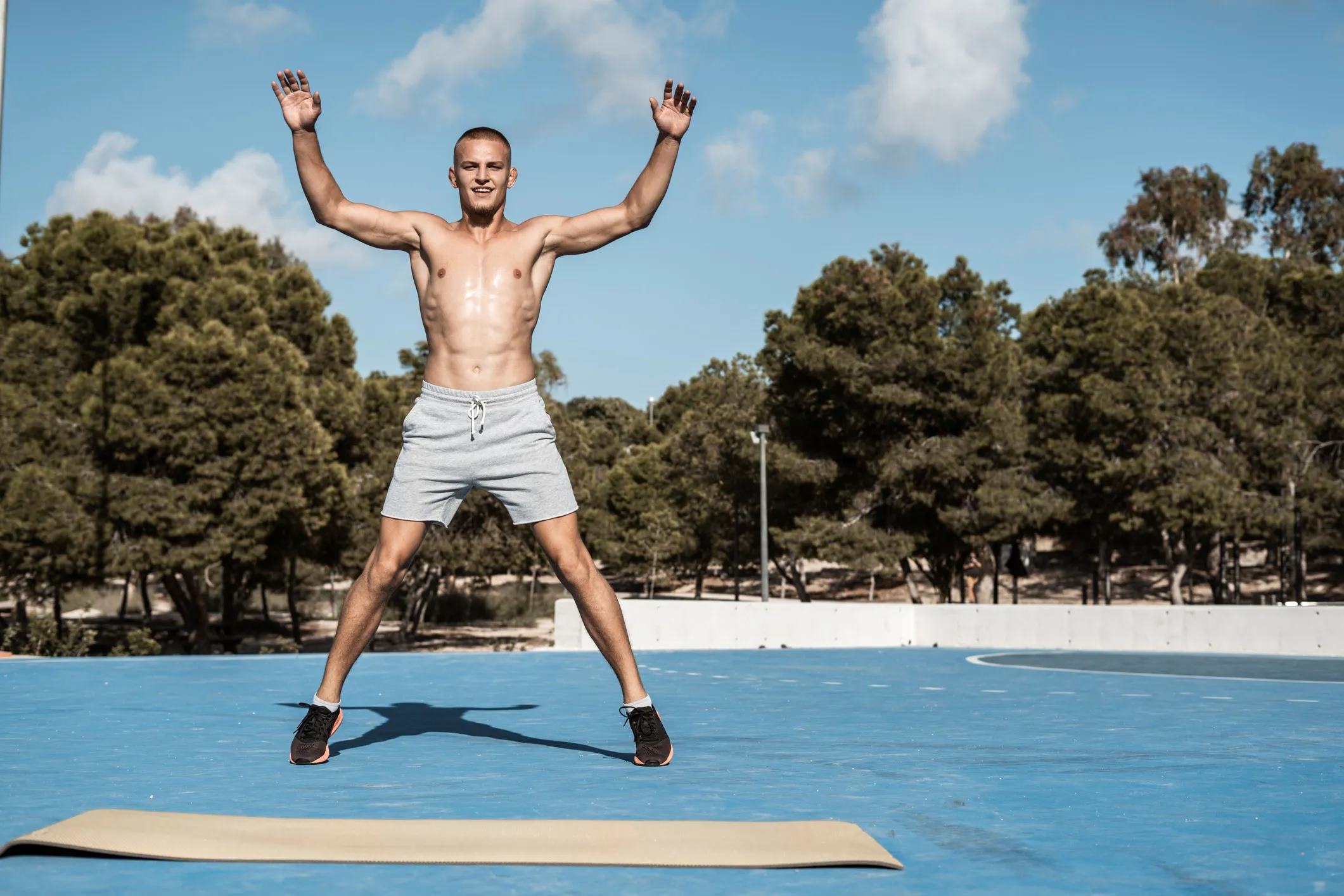

Featured
What Does Jumping Jacks Workout
Modified: January 2, 2024
Get Fit with Featured Jumping Jacks Workout! Improve cardiovascular health and tone your body with this high-intensity exercise routine. Jumpstart your fitness journey today!
Introduction
Jumping jacks are a versatile and dynamic exercise that have stood the test of time. These simple yet effective movements have been a staple in fitness routines for decades, and for good reason. Whether you’re a fitness enthusiast looking for a full-body workout or a beginner seeking to improve overall fitness, jumping jacks can be a valuable addition to your exercise routine.
Jumping jacks, also known as star jumps or side-straddle hops, are a cardio exercise that engages multiple muscle groups in your body. They are an excellent way to raise your heart rate, improve cardiovascular endurance, and burn calories. Additionally, jumping jacks require no equipment, making them a convenient and accessible exercise that can be performed virtually anywhere.
Not only do jumping jacks provide numerous physical benefits, but they also offer mental and emotional advantages. The repetitive nature of the exercise can help improve coordination, rhythm, and agility. Moreover, jumping jacks release endorphins, which can boost your mood and reduce stress.
In this article, we will explore the many benefits of incorporating jumping jacks into your workout routine. We will discuss the specific muscles targeted by this exercise, the correct technique for performing jumping jacks, variations to add variety to your workouts, and how to safely integrate them into your fitness regimen. So, let’s dive in and discover the incredible benefits of jumping jacks!
Benefits of Jumping Jacks
Jumping jacks offer a wide range of benefits for both your physical and mental well-being. Let’s take a closer look at some of the key advantages of incorporating jumping jacks into your workout routine:
- Cardiovascular Endurance: Jumping jacks provide an excellent cardiovascular workout, elevating your heart rate and improving your endurance over time. This can lead to increased stamina and better overall cardiovascular health.
- Calorie Burning: Jumping jacks are a fantastic calorie-burning exercise. They engage multiple muscle groups simultaneously, resulting in a higher calorie burn compared to isolated exercises. Incorporating jumping jacks into your routine can help you shed excess pounds and maintain a healthy weight.
- Full-Body Workout: Jumping jacks engage various muscle groups throughout your body, including your legs, arms, core, and shoulders. This exercise helps improve overall strength, toning your muscles and contributing to a well-rounded physique.
- Improved Bone Density: Regularly performing weight-bearing exercises like jumping jacks can help enhance bone density and reduce the risk of osteoporosis. Strong bones are essential for maintaining mobility and preventing fractures as you age.
- Enhanced Coordination and Agility: Jumping jacks require coordination between your upper and lower body movements. By practicing this exercise regularly, you can improve your coordination, agility, and overall body control.
- Stress Relief: Engaging in physical activity, such as jumping jacks, releases endorphins—the body’s natural mood boosters. This can help reduce stress, improve mental well-being, and increase overall happiness.
- Convenience and Accessibility: Jumping jacks require no equipment and can be performed virtually anywhere. Whether you’re at home, in a park, or at the gym, you can easily incorporate jumping jacks into your workout routine.
These are just a few of the many benefits that jumping jacks offer. Whether you’re looking for a high-intensity cardio workout, a full-body exercise routine, or a quick way to boost your energy levels, incorporating jumping jacks into your fitness regimen can help you achieve your goals.
Muscles Targeted by Jumping Jacks
Jumping jacks are a compound exercise that engages multiple muscle groups throughout your body. Let’s take a look at the main muscles targeted by this exercise:
- Leg Muscles: Jumping jacks primarily work your lower body muscles, including your quadriceps, hamstrings, glutes, and calves. These muscles are responsible for the explosive movements and coordination required during the exercise.
- Shoulder Muscles: As you perform jumping jacks, you raise your arms and bring them together above your head. This movement engages the deltoid muscles in your shoulders, helping to improve upper body strength and stability.
- Core Muscles: Your core muscles play a crucial role in stabilizing your body and maintaining balance during jumping jacks. The rectus abdominis, obliques, and transverse abdominis are all engaged to keep your torso steady as you jump in and out.
- Arm Muscles: The repetitive arm movements involved in jumping jacks target the muscles in your arms, specifically the triceps and biceps. This exercise can help tone and strengthen your arm muscles, contributing to a more sculpted upper body.
- Back Muscles: While performing jumping jacks, your back muscles, including the erector spinae and latissimus dorsi, help maintain proper posture and stability. These muscles play a key role in keeping your spine aligned and preventing injury.
- Heart and Lungs: Jumping jacks are a cardiovascular exercise that increases your heart rate and improves lung capacity. This helps strengthen your cardiovascular system and enhances overall endurance.
By targeting multiple muscle groups simultaneously, jumping jacks provide a comprehensive full-body workout. This compound exercise not only helps build strength but also improves coordination, flexibility, and overall fitness.
It’s important to note that the intensity and effectiveness of muscle engagement during jumping jacks can vary depending on factors such as your form, speed, and range of motion. By performing the exercise correctly, you can maximize the benefits for the targeted muscle groups and enhance your overall workout experience.
How to Perform Jumping Jacks Correctly
Jumping jacks are a relatively simple exercise, but it’s important to perform them with proper form to maximize their effectiveness and minimize the risk of injury. Follow these steps to ensure you’re performing jumping jacks correctly:
- Stand with Proper Posture: Begin by standing with your feet together and your arms resting at your sides. Maintain good posture, keeping your shoulders back, chest lifted, and core engaged.
- Jump Outward: From the starting position, jump both feet out to the side while simultaneously raising your arms out to the sides and above your head. Your body should resemble a star shape at the top of the movement.
- Jump Inward: Quickly reverse the movement by jumping back to the starting position, bringing your feet together and simultaneously lowering your arms back to your sides.
- Engage Your Muscles: Throughout the exercise, actively engage your leg muscles, core, and upper body to maintain control and maximize muscle activation.
- Maintain a Steady Rhythm: Aim for a steady and consistent pace while performing jumping jacks. Avoid rushing the movement, as this can compromise form and potential results.
- Breathe Properly: Remember to breathe deeply and rhythmically throughout the exercise. Inhale as you jump outward, and exhale as you jump inward.
- Reduce Impact: If you have joint issues or are looking to minimize impact, you can modify jumping jacks by performing a low-impact version. Instead of jumping, step one foot out to the side, followed by the other foot, and raise your arms as usual.
- Start Slowly: If you’re a beginner or haven’t performed jumping jacks before, start with a lower number of repetitions and gradually increase as your fitness level improves.
Remember to listen to your body and make modifications as needed. It’s crucial to prioritize safety and maintain proper form throughout the exercise. If you experience any discomfort or pain, consider consulting with a qualified fitness professional.
Incorporating jumping jacks into your fitness routine can provide a high-energy cardiovascular workout and engage multiple muscle groups. Practice proper form and gradually increase the intensity to reap the maximum benefits from this versatile exercise.
Variations of Jumping Jacks
While traditional jumping jacks are effective on their own, incorporating variations can add diversity to your workouts and target specific muscle groups. Here are some variations of jumping jacks that you can try:
- Power Jacks: This variation adds an explosive jump at the top of the movement, increasing the intensity and engaging more leg muscles. As you jump out, explode upward, reaching your arms and legs as high as possible before landing softly.
- Star Jacks: In this variation, rather than jumping your feet out to the sides, jump them forward and backward while simultaneously raising your arms overhead. This movement adds a new dimension to the exercise and targets your quads, hamstrings, and glutes.
- Clap Jacks: As the name suggests, this variation involves a clap at the top of the jumping jack. Jump your feet out to the sides, raise your arms, and clap your hands together above your head before returning to the starting position. Clap jacks require coordination and engage your shoulder muscles more intensely.
- Cross Jacks: Start with your feet together and arms by your sides. As you jump outward and upward, cross your arms in front of your body, forming an X shape. Return to the starting position as you jump inward, crossing your arms the opposite way. This variation targets your shoulders, chest, and core.
- Single-Leg Jacks: This variation adds an extra challenge by incorporating balance and stability. Instead of jumping with both feet, lift one leg off the ground, perform a traditional jumping jack with the remaining leg, and then switch legs on the next repetition. This variation strengthens your legs and improves overall stability.
- Seated Jacks: If you have limited mobility or prefer a seated workout, you can perform jumping jacks while sitting on a chair or stability ball. Sit with your back straight, place your feet shoulder-width apart, and simultaneously open your legs and raise your arms overhead. This seated variation targets your core, shoulders, and legs.
These variations not only provide a new challenge but also add excitement and variety to your workouts. Incorporating different types of jumping jacks can help prevent boredom and stimulate different muscle groups for a well-rounded fitness routine.
Remember to start with the variations that best suit your fitness level and gradually progress as you become more comfortable and stronger. Always prioritize proper form and listen to your body to avoid injury. Be creative and experiment with different jump sequences or incorporate variations into interval training or circuit workouts for a fun and effective routine.
Incorporating Jumping Jacks into your Workout Routine
Jumping jacks can be a valuable addition to your workout routine, whether you’re aiming to improve cardiovascular endurance, burn calories, or strengthen multiple muscle groups. Here are some tips on how to effectively incorporate jumping jacks into your fitness regimen:
- Warm-Up: Begin your workout with a dynamic warm-up to prepare your body for physical activity. Include activities such as jogging in place, arm circles, and leg swings. This will help increase blood flow to your muscles and reduce the risk of injury.
- Cardiovascular Circuit: Integrate jumping jacks into a cardiovascular circuit routine by alternating them with other exercises such as high knees, mountain climbers, or burpees. This will elevate your heart rate, increase calorie burn, and challenge your stamina.
- Interval Training: Incorporate jumping jacks into high-intensity interval training (HIIT) workouts. Alternate periods of intense jumping jacks with short recovery periods, repeating the sequence multiple times. This form of training can be an efficient way to improve fitness and maximize calorie burn in a short amount of time.
- Embrace Tabata: Apply the Tabata training method to jumping jacks. Perform jumping jacks at a high-intensity level for 20 seconds, followed by a 10-second rest. Repeat this eight times to complete a four-minute Tabata workout. This high-intensity interval training technique can improve aerobic and anaerobic capacity.
- Superset with Strength Exercises: Incorporate jumping jacks between sets of strength exercises to maintain an elevated heart rate and add a cardiovascular challenge. For example, perform a set of squats, then immediately follow it with a set of jumping jacks before moving on to the next strength exercise.
- Cool-Down: After completing your workout, cool down with static stretches to help your body recover and reduce muscle soreness. Focus on stretching the muscles targeted during jumping jacks, such as your legs, shoulders, and core.
- Progression: As your fitness level improves, gradually increase the intensity, duration, or complexity of your jumping jack exercises. This can include incorporating variations, increasing the speed, or adding weights to your wrists or ankles for additional resistance.
- Consistency: To see noticeable results, perform jumping jacks consistently as part of your overall fitness routine. Aim for at least three to four sessions per week, ensuring adequate rest and recovery between workouts.
Remember to listen to your body, modify exercises as needed, and consult with a fitness professional if you have any underlying health concerns or injuries. By incorporating jumping jacks strategically into your routine, you can elevate your workouts, boost your overall fitness, and achieve your fitness goals.
Precautions and Considerations
While jumping jacks are generally safe for most individuals, it’s important to take precautions and consider certain factors to ensure a safe and effective workout experience. Here are some precautions and considerations to keep in mind:
- Check with Your Doctor: If you have any pre-existing medical conditions, are pregnant, or have concerns about your fitness level, it’s always a good idea to consult with your healthcare provider before starting a new exercise routine.
- Choose the Right Surface: Perform jumping jacks on a flat, non-slip surface to reduce the risk of slips or falls. Avoid exercising on uneven or slippery surfaces that may compromise your stability.
- Proper Footwear: Wear supportive athletic shoes that provide cushioning and stability to protect your feet and reduce the risk of impact-related injuries.
- Pay Attention to Form: Focus on maintaining proper form throughout the exercise, including a neutral spine, engaged core, and controlled movements. Avoid excessive bouncing or jerky movements that can strain muscles or joints.
- Start Slowly: If you’re new to jumping jacks or returning after a break, start with a lower intensity and gradually increase as your fitness level improves. Overdoing it too quickly can lead to muscle soreness or injuries.
- Listen to Your Body: Pay attention to any discomfort or pain during the exercise. If you experience sharp or prolonged pain, stop and consult with a healthcare professional to avoid further injury.
- Modify as Needed: If you have joint issues or physical limitations, modify jumping jacks to suit your needs. You can perform low-impact variations, reduce the range of motion, or use supporting equipment, such as resistance bands for added stability.
- Adequate Warm-up and Cool-down: Always warm-up before starting your jumping jacks session to prepare your muscles and joints. Likewise, cool down and stretch afterward to promote muscle recovery and flexibility.
- Hydrate Properly: Stay hydrated before, during, and after your workout. Drink water to replenish fluids lost through sweating and to support optimal performance.
- Gradual Progression: Progress gradually to avoid overexertion and reduce the risk of injury. Increase the intensity, duration, or complexity of your jumping jack exercises over time, allowing your body to adapt.
By taking these precautions and considerations into account, you can minimize the risk of injury and ensure a safe and effective jumping jacks workout. Remember that everyone’s fitness level and capabilities are unique, so it’s essential to listen to your body and make modifications as needed.
Conclusion
Jumping jacks are a timeless and versatile exercise that offer numerous benefits for your physical fitness and overall well-being. Whether you’re looking to improve cardiovascular endurance, burn calories, strengthen multiple muscle groups, or simply add variety to your workout routine, jumping jacks can be an excellent choice.
By engaging in jumping jacks regularly, you can elevate your heart rate, improve cardiovascular health, and increase your stamina. This exercise targets various muscle groups, including your legs, core, arms, and shoulders, leading to improved strength, toning, and coordination. Additionally, jumping jacks can help enhance bone density, reduce stress levels, and boost your mood.
When incorporating jumping jacks into your workout routine, it’s important to prioritize proper form, gradually increase the intensity, and listen to your body’s needs. If you have any underlying health concerns or limitations, it’s always wise to consult with a healthcare professional or fitness expert.
Remember to warm up before your workout, cool down and stretch afterward, and modify the exercise as needed to accommodate your fitness level. Variety is key, so don’t be afraid to try different variations of jumping jacks or incorporate them into interval training or circuit workouts for added challenge and excitement.
By making jumping jacks a regular part of your fitness routine, you can reap the benefits of improved cardiovascular health, increased strength, enhanced coordination, and a boost in overall fitness. So lace up your shoes, find a suitable space, and start enjoying the many advantages that jumping jacks have to offer!
